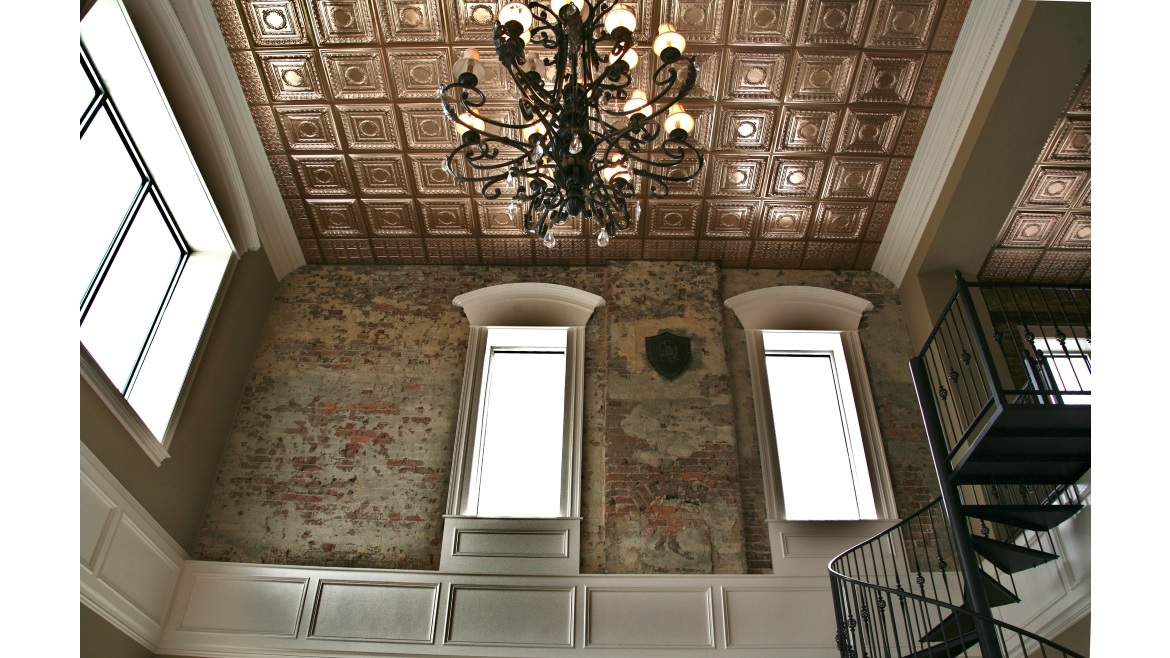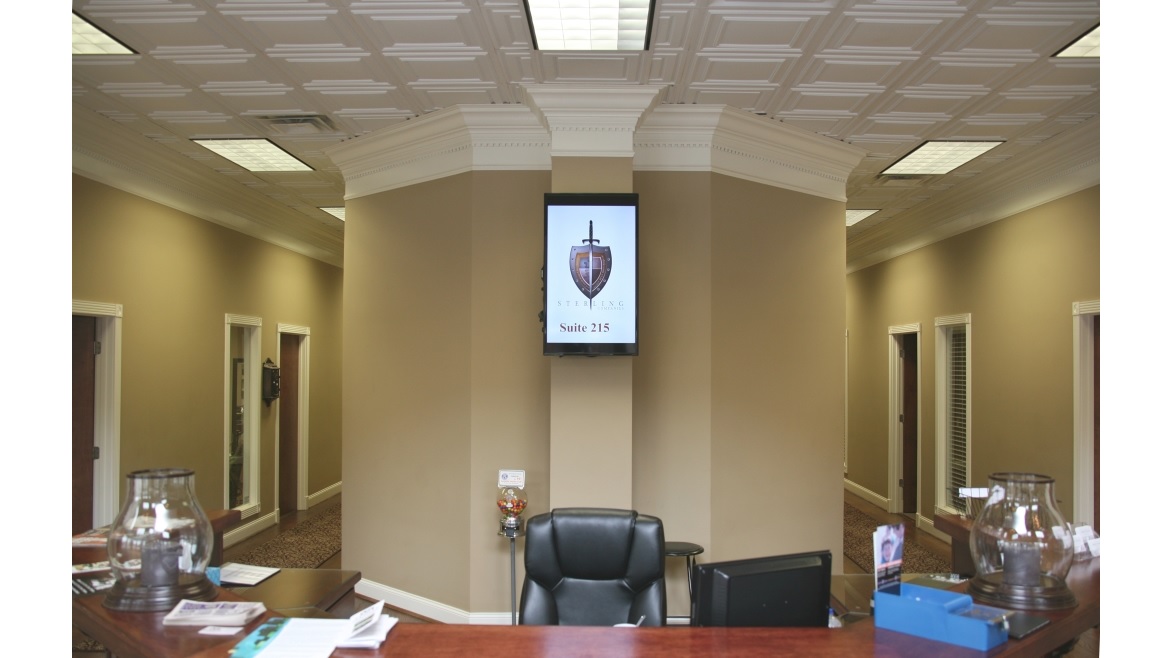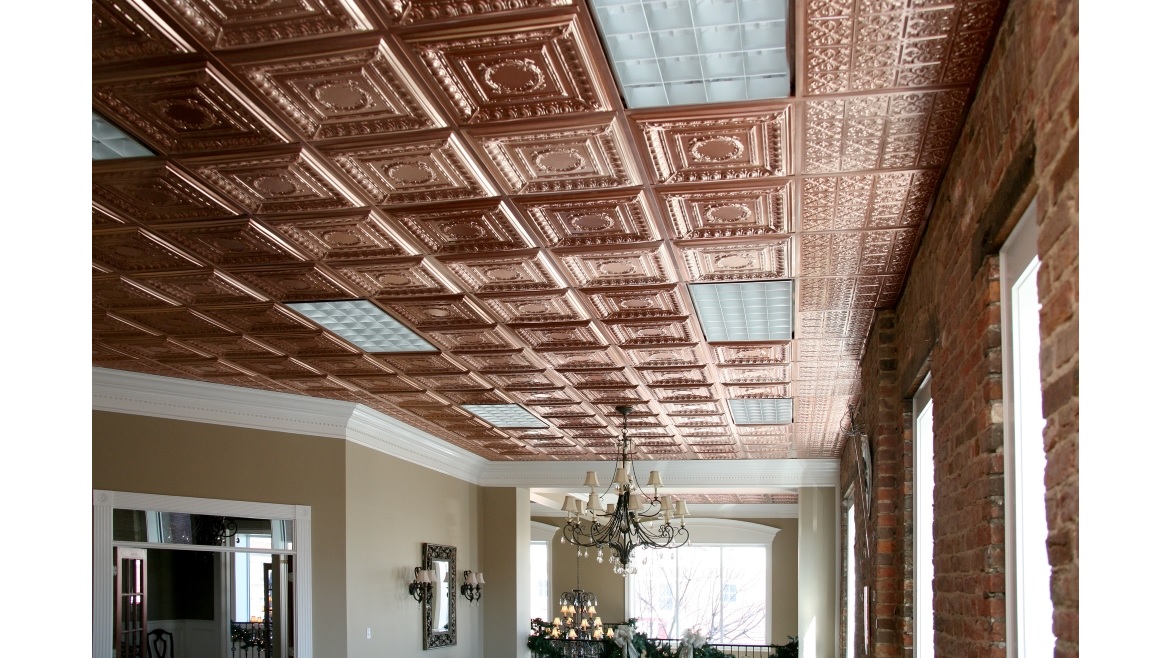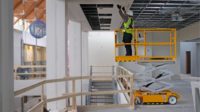When Phillip Carr discovered that the drab, 1950s ex-pawnshop he’d bought to house his management company was actually an ornate historic building dating from the 1880s, his renovation plans changed. Instead of simply gutting the structure and constructing plain-vanilla office space, he decided to try to restore the building’s original grandeur. However, little more than the bones of the structure could be salvaged. In a labor of love, he redesigned the interior in a style that honored the building’s 19th-century origins, brought in a specialty mason to recreate the original brick façade, found an expert to rebuild the 1901 freight elevator and discovered a perfect replacement for the stamped-metal ceilings – Ceilume thermoformed ceiling tiles.
The building at 400 Broad Street in Gadsden, Alabama, was constructed shortly after the 1883 fire that burnt out the downtown area. It was built by a Prussian immigrant, Herman Herzberg, who had fought in the Civil War and then went into the mercantile business. His store operated on the site until 1944 as Herzberg-Loveman Drygoods. The building was eventually sold in 1979 and became a large pawnshop. The decorative brick front was covered by a flat metal façade, the side and back exterior brick were coated with an inch of concrete and painted white. Half of the interior was closed off for storage of abandoned, unsold pawns, and the building was allowed to deteriorate slowly over the ensuing decades.
When Carr’s company bought it in 2010, “the building was in terrible, terrible shape,” according to Carr. His intention was to gut the structure and build out offices. “It wasn’t until we started doing the demolition that we saw what the building was really like,” he said. “We started tearing it all off and saw the real character of the building.” His team found a picture of the original structure in the collections of the Library of Congress, on a perspective map of the town that included pictures of local landmarks. They were amazed at the transformation that it had been subjected to.

The two-story atrium over the main entrance to the building, with a wrought iron chandelier to complement the graceful spiral staircase, is a stunning contrast with the bright copper ceiling.
Photo courtesy of Vista Holdings via Ceilume
“We kind of backed up and said, ‘If we’re going to do this, we got to do it justice and return it to its original glory,’” Carr related. They removed the ugly metal façade but discovered that they could not successfully reveal the brick underneath the concrete coating. Instead, Carr found a specialty mason to recreate the original brick design in a new layer.
Little of the interior could be saved, either. The original stamped metal ceilings were still there but badly rusted and damaged. Only a small, inadequate number of tiles could be re-used. One feature they could not remove was a massive structural beam that runs from front to back between the first and second stories, dividing the building in two.
Acting as his own designer, Carr laid out a new vision for the interior. “We wanted something that matched that early-1800s, Jeffersonian kind of look,” Carr commented.
At the front, a two-story atrium rises from the main entrance to the second-floor landing/lounge, the two floors linked by an elegant iron spiral stairway. The upper landing is a lounge area, furnished like a sitting room in an elegant 19th-century home. Front glass was restored and expanded on both floors. The massive horizontal beam has become a catwalk that traverses the atrium to the three tall second-floor bay windows that overlook Broad Street. The stairway’s wrought-iron railings extend along the second-floor landing and across the catwalk, complemented by wrought iron chandeliers that light the space. Exposed brick of the exterior walls is paired with white formal millwork panels and moldings, set off by dark oak floors. A corridor of office spaces runs down either side of the building on each floor, simply but elegantly designed with white moldings against taupe walls.

The reception area and two first-floor hallways feature white Stratford ceiling tiles as a major element of the décor.
Photo courtesy of Vista Holdings via Ceilume
The ceilings presented a restoration problem. “Tin and copper ceilings were just unbelievably expensive,” Carr recalled. “So, I just kept looking and researching online” until he found Ceilume thermoformed tiles. Ceilume makes 40 different patterns of three-dimensional tiles, including several that closely replicate the look of stamp metal ceilings. Among the color and finish options are three metallic finishes. For the atrium and the second-floor hallway that connects to it, Carr selected Ceilume’s Empire pattern in a copper finish, with a border-row of Ceilume’s Fleur-de-Lis, a pattern that resembles an array of small (6-inch) stamped metal tiles, also in copper. They were installed in standard 2-foot by 2-foot suspension grids, which were painted to match the tile.

The thermoformed ceiling was dropped into a standard 2x2 suspension grid, which was painted to match the copper tile color.
Photo courtesy of Vista Holdings via Ceilume
The area of the first-floor reception desk and the connecting hallways features ceilings in Ceilume’s Stratford pattern, a low-profile design of concentric squares, in white. The pattern creates a sense of formality reminiscent of coffered ceilings and works well with the fluted moldings around the office doors to create that Jeffersonian look that Carr sought.
The restored building has been occupied for 13 years, tenanted by Carr’s management group, The Sterling Companies, as well as other businesses. It has proved an attractive office location. The exterior truly restores the building’s historic look, although the interior is probably more decorative and elegant than the dry goods store was in its day. Like the original establishment, however, it is well-suited to the commercial environment of the times, a building that attracts office tenants with an upscale atmosphere in which to do business.





Report Abusive Comment